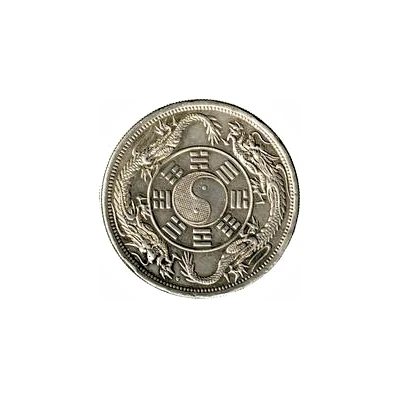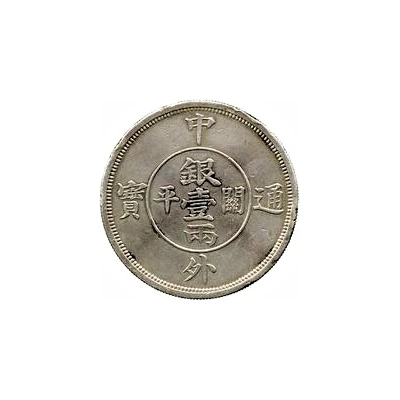½ Tael Pattern ND
1868 year| Silver | 19 g | 34 mm |
| Issuer | Empire of China |
|---|---|
| Emperor | Qing dynasty › Tongzhi (同治帝) (1861-1875) |
| Type | Pattern |
| Year | 1868 |
| Value | ½ Tael |
| Currency | Kwanping Tael (1868) |
| Composition | Silver |
| Weight | 19 g |
| Diameter | 34 mm |
| Thickness | 1.8 mm |
| Shape | Round |
| Technique | Milled |
| Orientation | Medal alignment ↑↑ |
| Demonetized | Yes |
| Updated | 2024-10-03 |
| Numista | N#243345 |
|---|---|
| Rarity index | 100% |
Reverse
Two Chinese ideograms within wreath.
Script: Chinese (traditional, regular script)
Lettering:
半
兩
Translation:
Ban Liang
1/2 Tael
Comment
Not much was known about this series for a very long time, from the dates these were struck to the mints that struck them. The Berlin Mint, the Royal Mint, and the Osaka Mint had all been proposed, but it is now certain these come from the Royal Mint in London. The original dies were proposed in 1867, with the circulating coins meant to be struck at the Hong Kong Mint; however, that mint closed in 1868, and production never took place.These coins are thought to be an attempt at a national currency; however, it is theorized that these could have been intended to be used in trade with Korea, based on the design.
Interesting fact
The Pattern ½ Tael coin was designed by the French engraver, Jean-Antoine Raux, who was commissioned by the Chinese government to create a new currency for the country. The coin features a unique blend of traditional Chinese design elements, such as the dragon and the phoenix, with Western-style engraving techniques. This fusion of East and West design styles was a hallmark of Raux's work and gave the coin a distinctive look that set it apart from other coins of the time.

